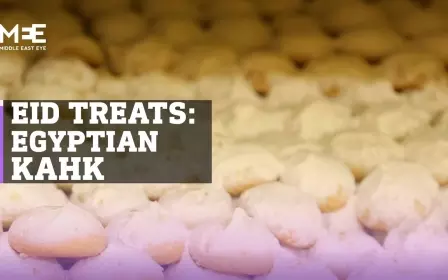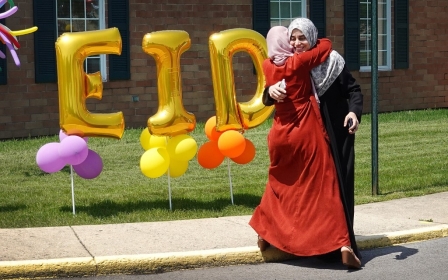
Eid al-Fitr 2022: Muslims welcome festival marking end of Ramadan
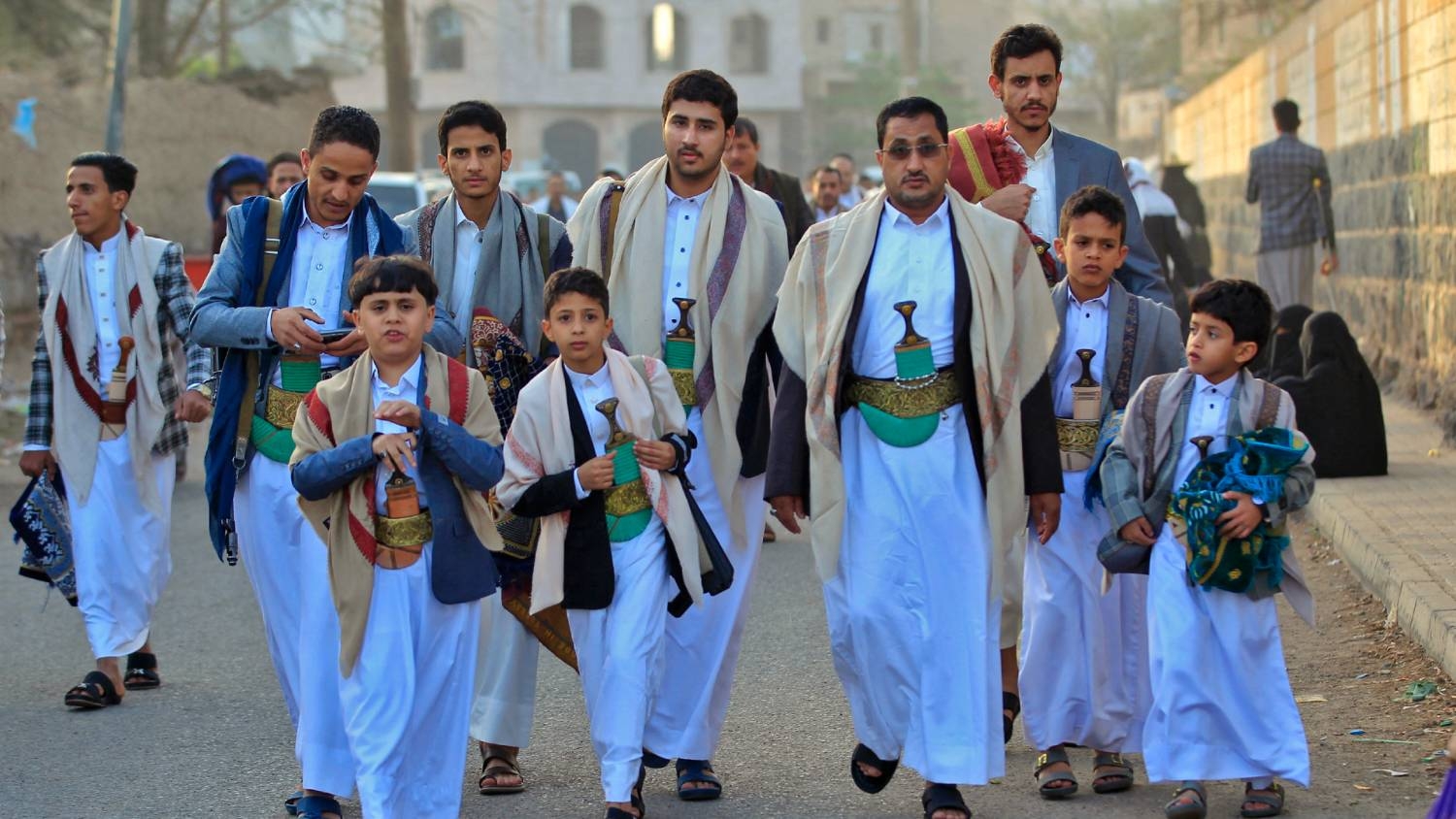
For Muslims, Eid al-Fitr marks the end of the fasting month of Ramadan and the start of the Islamic month of Shawwal. The occasion is an opportunity for merriment and is one of the two days, alongside Eid al-Adha, on which even optional fasting is forbidden for all Muslims. The faithful mark the day by visiting family members, paying respects to loved ones who have passed away and enjoying the foods they abstained from during daylight hours in Ramadan. An exciting element of the festival for young and old is to put on new or traditional outfits. Here a group of Yemeni men in Sanaa dress in thobes, with the jambiya - a small, traditional dagger that represents strength and honour - tucked into their belts. (AFP/Mohammaed Huwais)
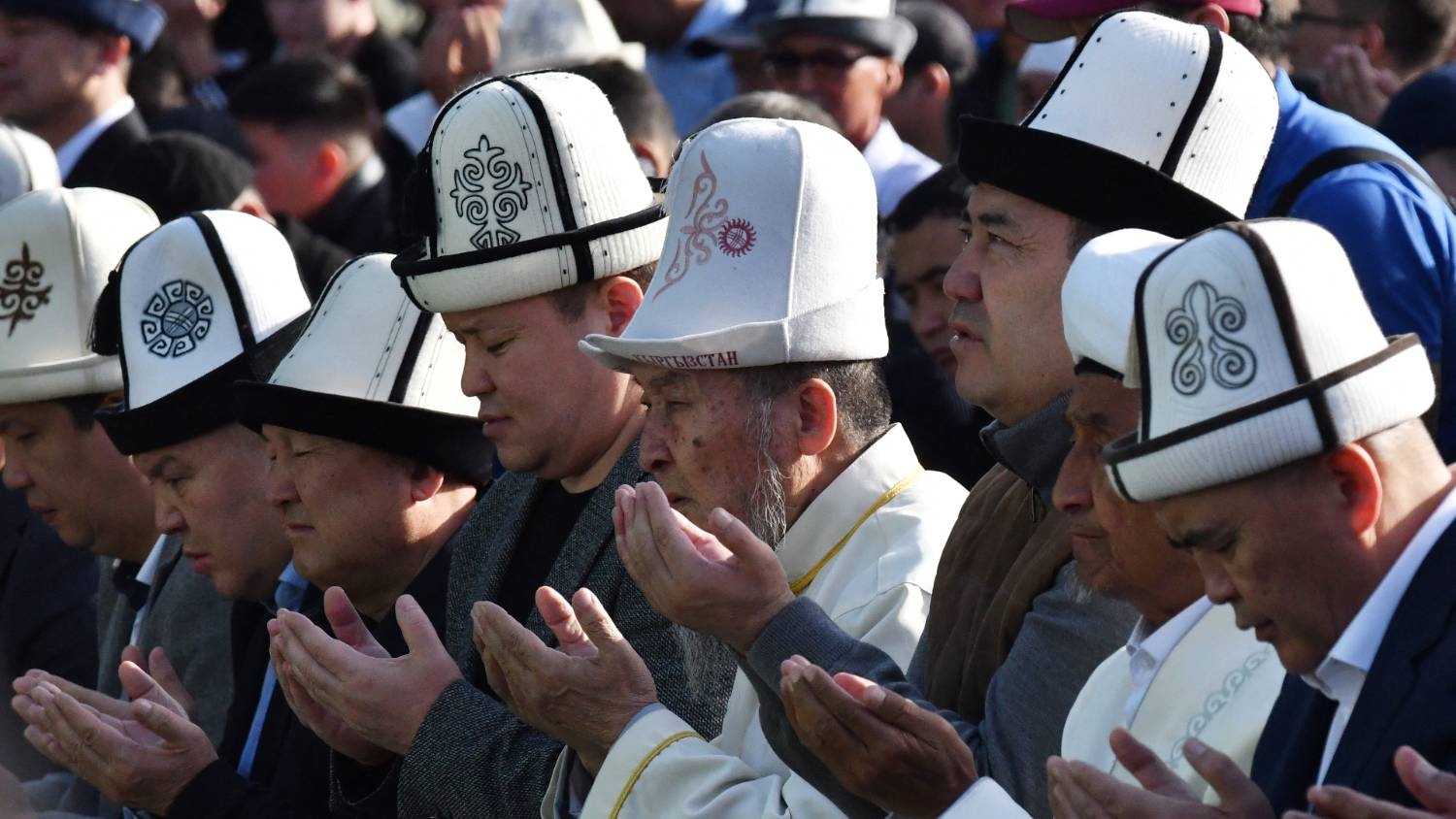
Muslims pay money to charity, known as zakat al-fitr, before they begin special prayers called salat-ul-eid. The prayers are only offered on the morning of Eid and are traditionally held outside in open spaces, if weather permits. Here worshippers in Bishkek, Kyrgyzstan, including the country's president Sadyr Japarov (third right), pray together, wearing ak-kalpaks, traditional felt hats that are unique to the country. (AFP/Vyacheslav Oseledko)
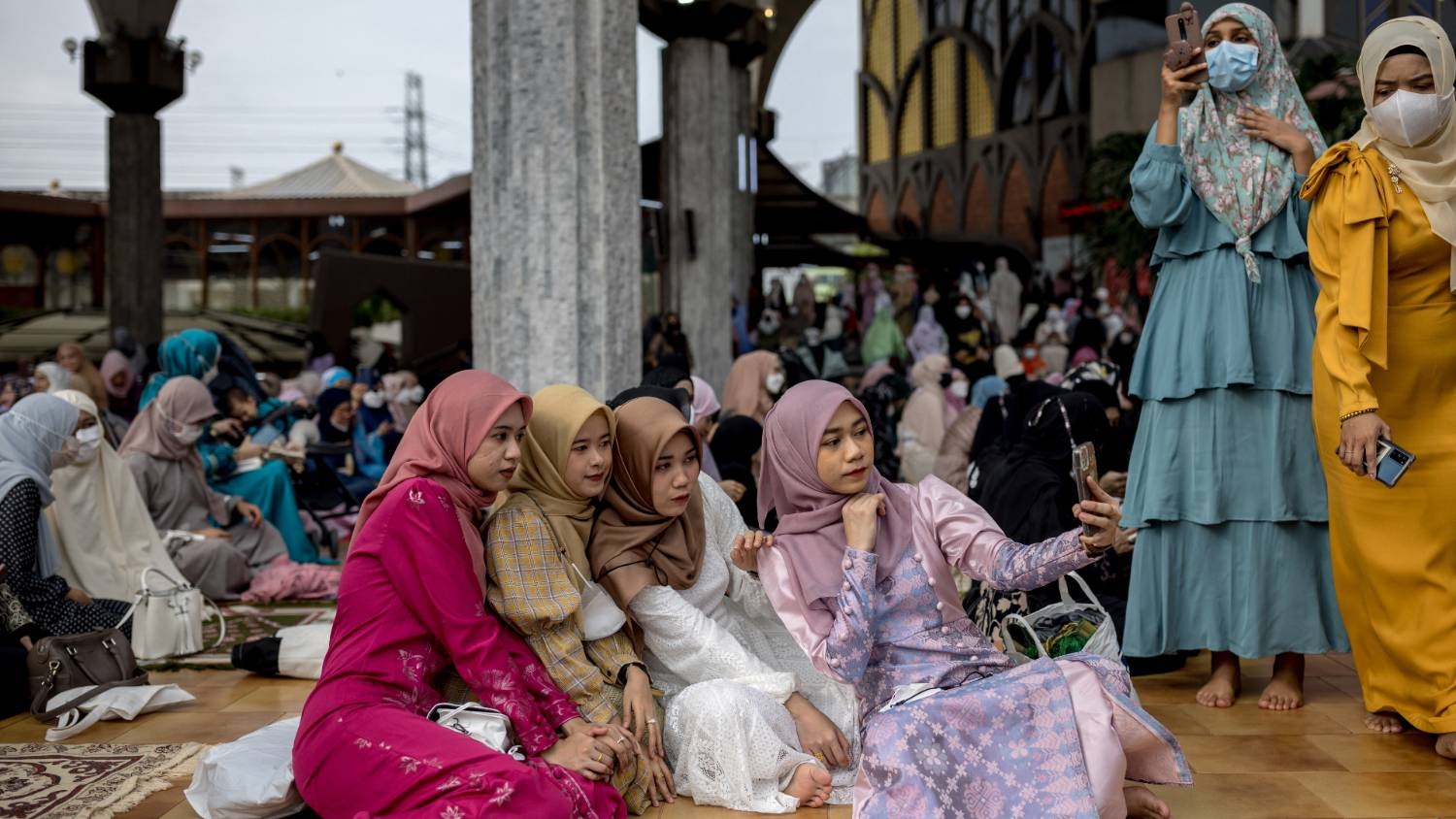
Prayers are also a time to reconnect with friends and family after a month of fasting and spiritual reflection. Here, a group of colourfully dressed Thai ladies gather to take selfies at a mosque in Bangkok, Thailand. (AFP/Jack Taylor)

Henna or mehndi is used in Muslim cultures at a time of celebration. Though often applied for weddings, some communities, in Somalia, Malaysia, the Middle East and South Asia also use it to decorate their hands in intricate patterns to mark Eid. Here, women in Kathmandu, Nepal, show off their designs. (AFP/Prakash Mathema)
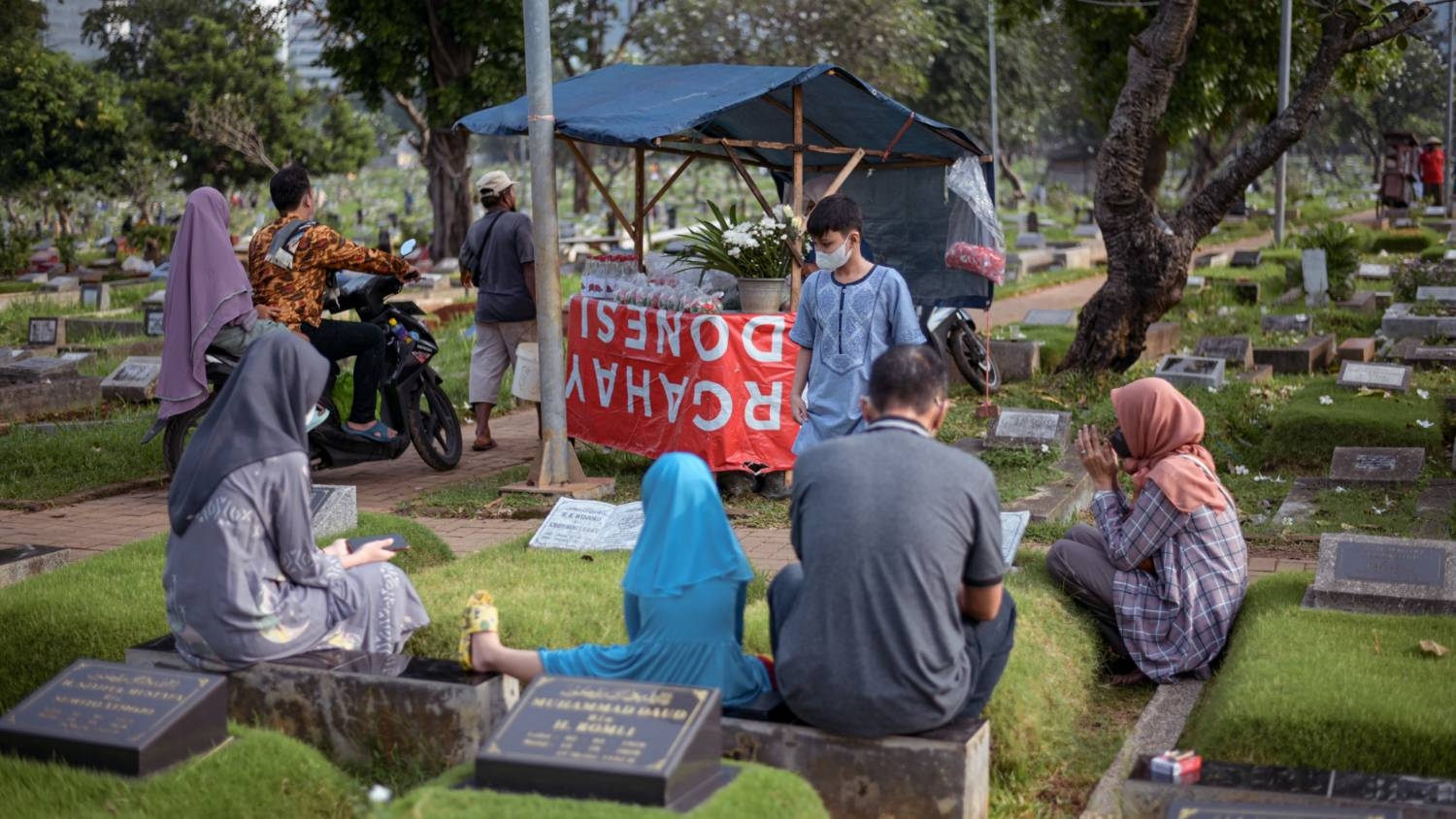
Some Muslims also visit graveyards to remember loved ones who have passed away as a mark of respect after Eid prayers. This family in Jakarta, Indonesia, gather to read verses from the Quran before continuing the day's celebrations. (AFP/Bay Ismoyo)

Balloons and other toys are usually sold by street vendors on the day, adding colour to festivities and bringing joy to children. The top picture shows a child in Gaza playing with balloons and here a young boy dressed in the traditional Palestinian bisht (a light cloak worn over a thobe) and keffiyeh is carried on the shoulders of a relative at the Al-Aqsa mosque in Jerusalem. (AFP/Mahmud Hams/Ahmad Gharbali)
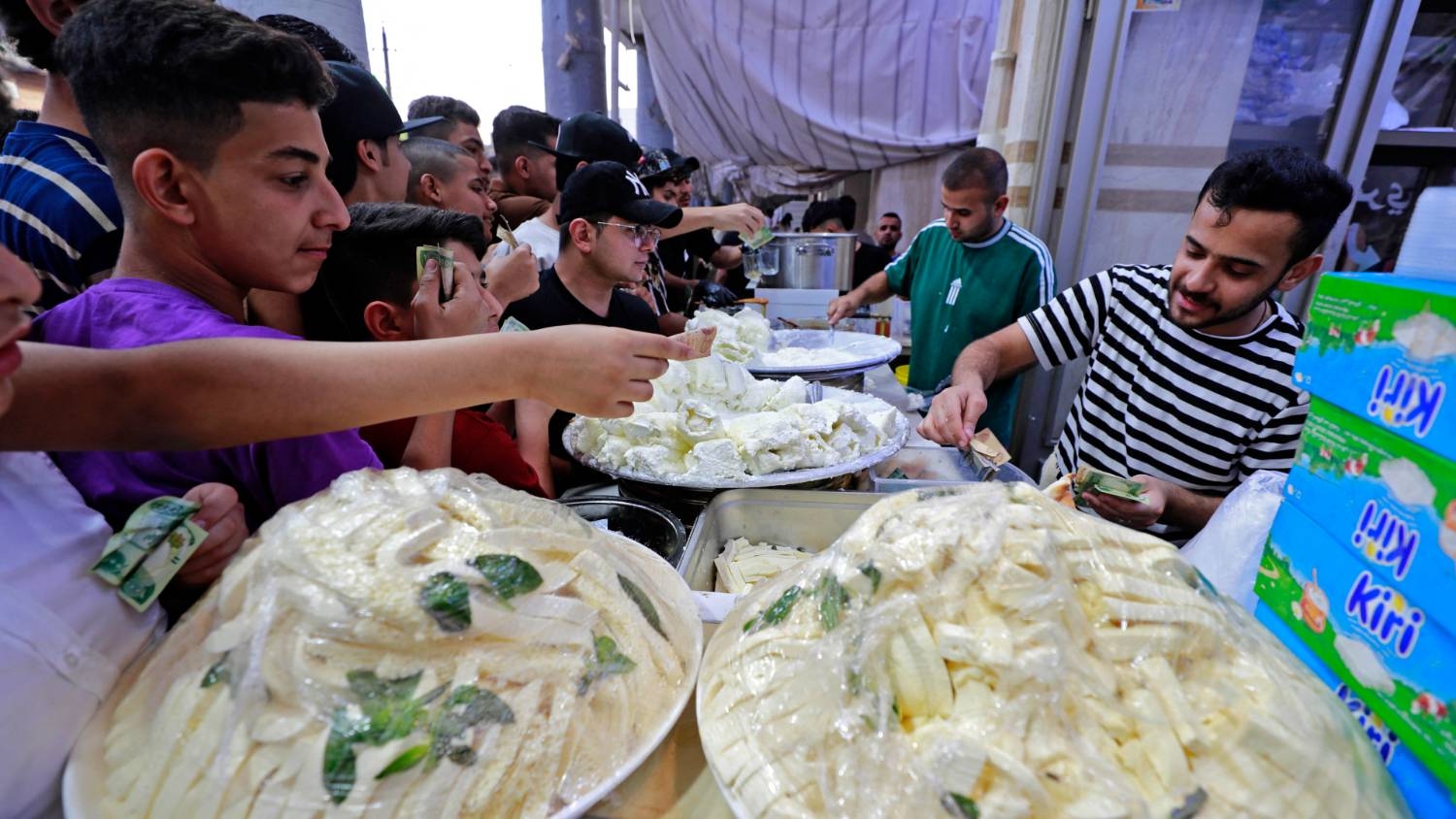
Special foods and desserts are often prepared by businesses and families on Eid to purchase and share with relatives. Here, in Baghdad's Sadriya district, people are buying geymar, which is a thick clotted cream traditionally made from the milk of water buffalos. The delicacy is usually enjoyed doused in honey and with a serving of kahi, a flaky layered pastry. (AFP/Ahmad Al-Rubaye)
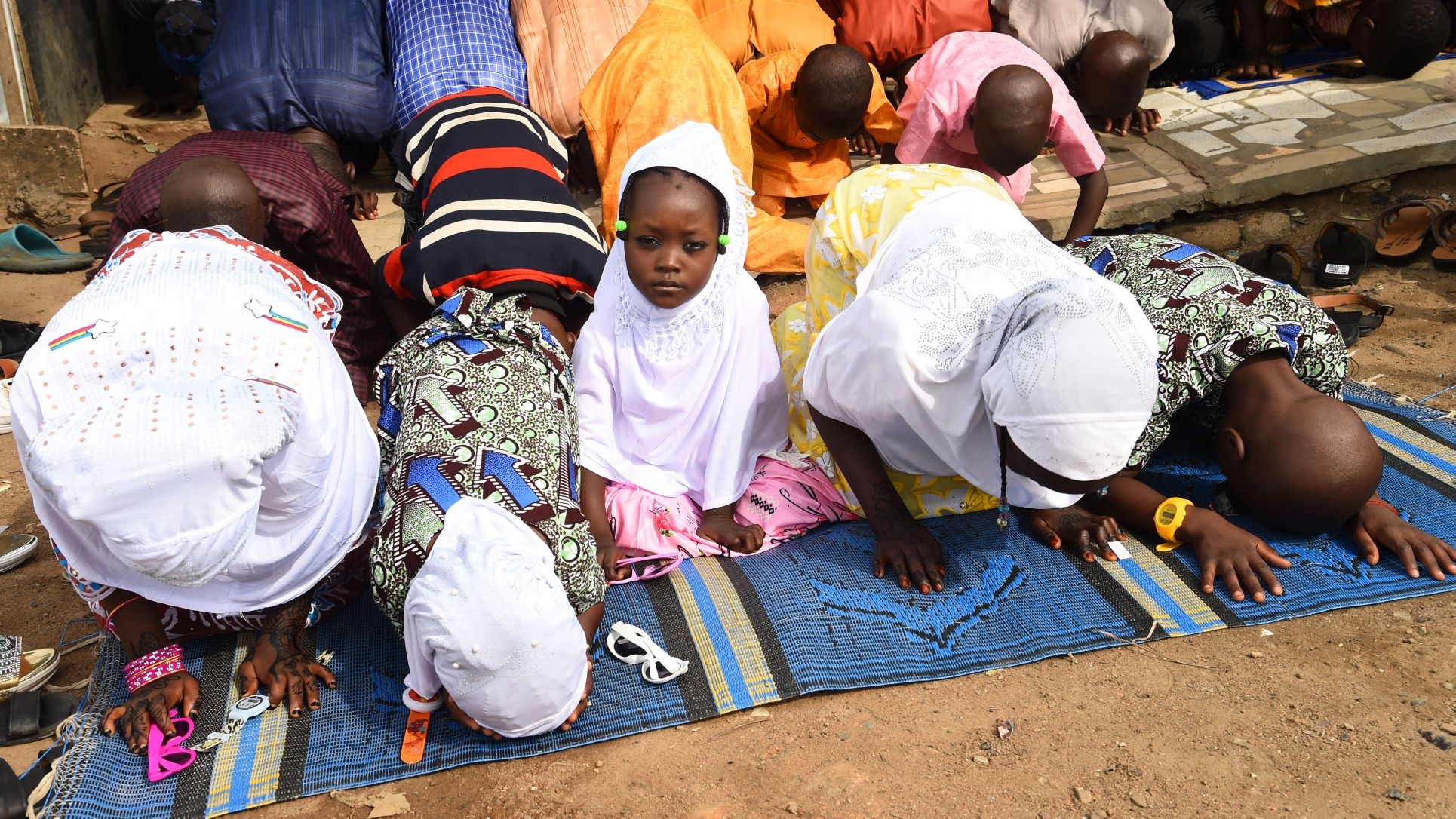
Children attend Eid prayers in the Nigerian region of Ibafo in the state of Ogun on Monday (AFP/Pius Utomi Ekpei)
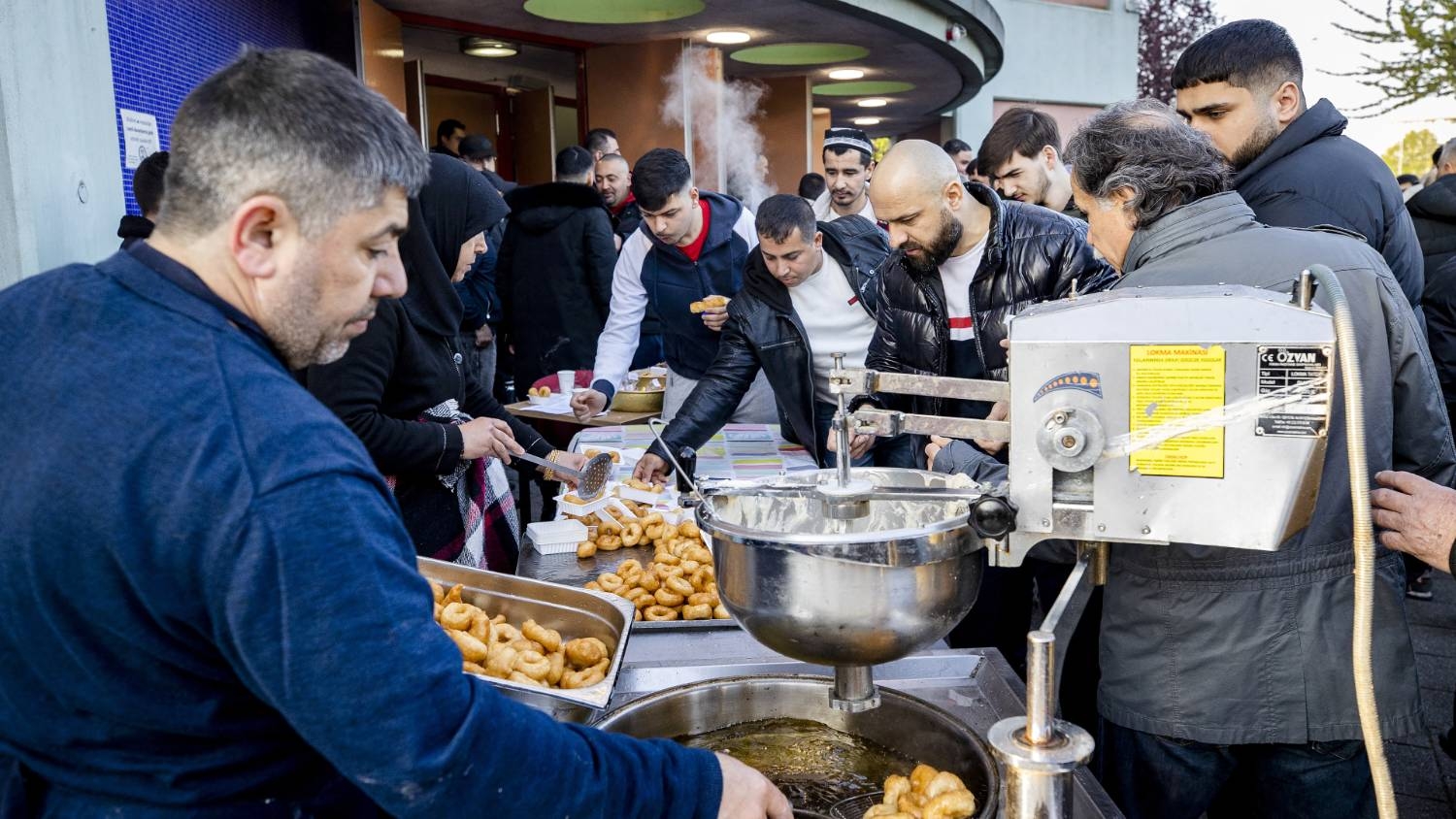
Muslims at the Mevlana Mosque in Rotterdam in the Netherlands also stock up on snacks to take home and share with their families. (AFP/ANP/Sem Van Der Wal)

After breakfast, children spend the day playing. Here, Syrian children gather at a makeshift playground in Maarat Misrin, north of Idlib in Syria. (MEE/Ali Haj Suleiman)

Men prepare for prayers at Al-Basha mosque in Mosul, Iraq. For the most observant of the Prophet Muhammad's traditions, there are six optional fasts that can be kept in the month of Shawwal and can be observed during the month after Eid al-Fitr. (MEE/Ismael Adnan)
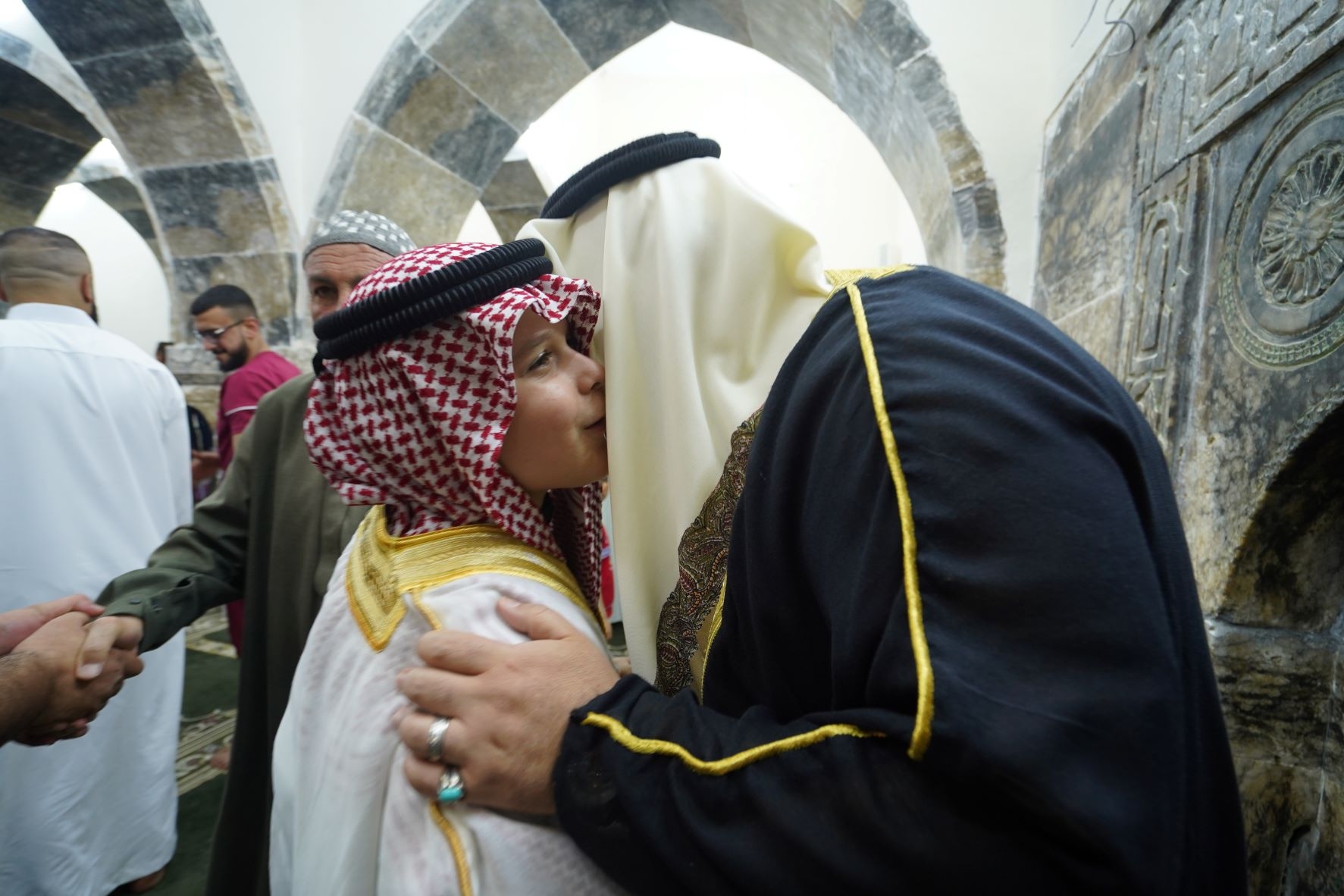
A boy embraces an elder after Eid prayers at Al-Basha mosque in Mosul, Iraq. (MEE/Ismael Adnan)
Middle East Eye propose une couverture et une analyse indépendantes et incomparables du Moyen-Orient, de l’Afrique du Nord et d’autres régions du monde. Pour en savoir plus sur la reprise de ce contenu et les frais qui s’appliquent, veuillez remplir ce formulaire [en anglais]. Pour en savoir plus sur MEE, cliquez ici [en anglais].


